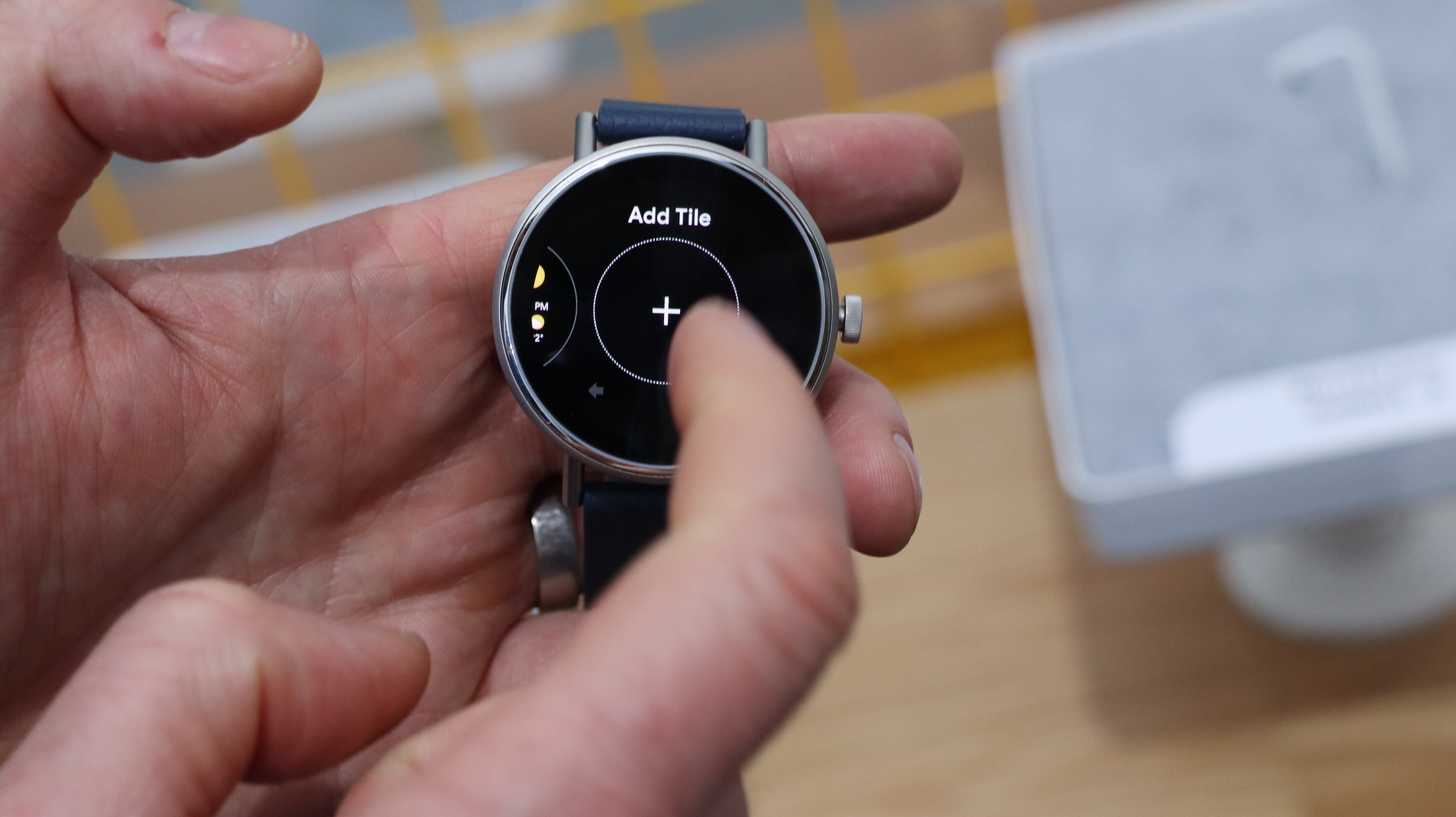'Tiles' bring Wear OS closer to the clean Apple Watch experience
Quick, essential info

We got a closer look at the Wear OS ‘Tiles’ mini-screens at Google IO 2019, and found the newly launched UI is a trajectory toward a cleaner, more purpose-based interface.
Tiles are one-and-done mini-apps Wear OS users access by swiping right from the home screen. Each Tile is a discrete mini-chunk of information, from weather to a reminder of your next upcoming event – things that could be combined into single screens on larger devices, but which occupy just enough info on a single Tile screen.
Tiles fall somewhere between complications and full-blown apps
On paper, Tiles seem a bit superfluous: they’re somewhere between the mini-notification “complications” sprinkled across a Wear OS-running watch’s home screen and full-blown smartwatch apps. In practice, though, they could streamline the way users flow through essential information in bite-sized chunks, which is much simpler to navigate than denser multi-screen apps.
“It’s a new surface that’s fast and focused on one use case,” Tiles Product Manager Francois Deschenes told TechRadar. They’re optimized for consuming from wrist devices, with tons of user feedback to refine how much – or how little – info should be parceled out in each tile.
Essential info to the front, serious apps to the back
Tiles aren’t necessarily the next direction for Wear OS – they’re literally an offshoot, nested off to the side by way of a quick-access swipe. But this quickly-consumed essential info makes much more sense partitioned to a shortcut chain rather than buried deep in a menu alongside more robust multi-screen apps.
To start, Wear OS has only introduced the most clearly useful first-party services as Tiles: goals, your next scheduled event, forecast (weather), heart rate, news headlines, and timer. You can long-press a Tile or reorder or dismiss it, allowing users to customize their Tile flow.
In the future, the Tiles API might be expanded to let third parties access it, though there aren’t currently any plans to do so. This could be how Wear OS users get quick glimpses or essential controls for their third-party apps, should Google grant third-party developers access.
Get daily insight, inspiration and deals in your inbox
Sign up for breaking news, reviews, opinion, top tech deals, and more.
- Tiles will be available soon on any of our list of best Wear OS 2019 watches
David is now a mobile reporter at Cnet. Formerly Mobile Editor, US for TechRadar, he covered phones, tablets, and wearables. He still thinks the iPhone 4 is the best-looking smartphone ever made. He's most interested in technology, gaming and culture – and where they overlap and change our lives. His current beat explores how our on-the-go existence is affected by new gadgets, carrier coverage expansions, and corporate strategy shifts.
